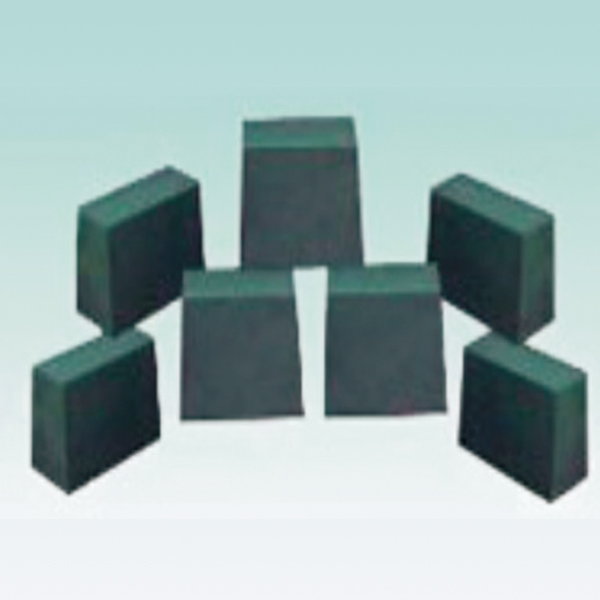Contact: Lin Manager
Mobile phone: 182-4265-7979
Landline (fax): 0417-5845558
Website: www..csnh10.com
en.csnh10.com
Address: Nanlou Economic Development Zone, Yingkou City, Liaoning Province
The price of bonded magnesia chrome bricks is the MgO-Cr2O3 refractory products made of high-purity magnesia and chromium concentrate with less impurity content, which are ground and fired at high temperature (above 1700℃). Due to the high direct bonding rate of high-temperature mineral phase, it has high resistance Strong slag resistance, high temperature strength and excellent thermal shock resistance; combined with magnesia chrome bricks are MgO-Cr2O3 refractory products made of fused magnesia chrome sand as raw materials, high-pressure forming and high temperature firing at 1800℃. Due to the higher direct bonding rate, low apparent porosity and high volume density, the high temperature strength and slag corrosion resistance of combined magnesia-chrome bricks are higher than that of directly combined magnesia-chrome bricks. However, the thermal shock resistance of combined magnesia chrome bricks is poor. The main characteristics of MgO-Cr2O3 refractory damage at the slag line of refined steel tanks are: chemical erosion of slag, structural spalling caused by slag penetration, and erosion of high-temperature molten steel slag. MgO-Cr2O3 refractory material has certain corrosion resistance to CaO-SiO2 slag with low CaO/SiO2 ratio (less than 2), but for CaO-SiO2 slag with high CaO/SiO2 ratio at high temperature, especially containing When Fe2O3 is high, the eutectic temperature drops rapidly, and the corrosion resistance is very poor. Electric furnace magnesia carbon brick
Due to the presence of magnesia-iron spinel, iron oxides can promote the sintering of magnesia-chromium refractories to a certain extent, but due to the existence of valence of iron oxides, and the solid solution of two oxides FeO and Fe2O3 in periclase The temperature is slightly different. This causes the magnesia-chromium products with high iron oxide content to be unsuitable for copper smelting production with unstable atmosphere and unstable temperature.

If a magnesia-chromium refractory with a higher iron content is used in a copper converter, it is possible to form a skyrocketing and loose layer due to the following phenomena: Under high temperature reduction, the Fe2O3 in the periclase solid solution will be reduced to FeO, and Low-iron spinel is formed in the brick body; and under the temperature reduction or oxidizing atmosphere, the low-iron spinel will be oxidized again to generate MgO·Fe2O3; and the volume change in the process will cause magnesium The inflation of chrome refractories and the formation of evacuation layers.
The above-mentioned substances on the use of magnesia-chromium refractories in the copper smelting process are not only their own influence on magnesia-chromium refractories, but also their interaction with iron-silicon slag and SO2 atmosphere. Nowadays, the most popular varieties in commercial communication include ordinary magnesia chrome bricks, direct combined magnesia chrome bricks, recombined (semi-recombined) magnesia chrome bricks and unburned magnesia chrome bricks.
1. Ordinary magnesia chrome brick:
Ordinary magnesia chrome bricks are generally produced from sintered magnesia (with a mass fraction of MgO between 89% and 92%) and refractory chrome ore as raw materials. Due to many impurities, the refractory grains are combined with silicate. The magnesia-chrome bricks commonly referred to in China generally refer to fired ordinary magnesia-chrome bricks, also known as silicate-bonded magnesia-chrome bricks, or magnesia-chrome bricks for short. The production process of ordinary magnesia-chrome bricks is simple, cheap and widely used. Cement kiln (Cr2O3 mass fraction rarely exceeds 14%), glass kiln regenerator, steelmaking furnace lining, refining steel cladding, non-ferrous metallurgy furnace, lime kiln, mixing furnace and refractory high temperature furnace lining, etc.
2. Directly combined with magnesia chrome brick:
The main difference between the production process of direct combined magnesia chrome brick and ordinary magnesia chrome brick is that the former uses raw materials with less impurity content and is fired at a relatively high temperature. For the production of magnesia directly combined with magnesia-chrome bricks, the mass fraction of MgO is generally greater than 95%, preferably greater than 97%, and the particle bulk density is about 3.25g/cm3. The mass fraction of SiO2 in chrome ore is generally limited to less than 3%. When chromium concentrate, SiO2 mass fraction can be less than 1.0%. According to different needs and uses, sometimes 1 or 2 kinds of magnesia and 1 or 2 kinds of chrome ore can be used as ingredients. Directly bonded magnesia-chrome bricks for cement kilns, generally use magnesia as fine powder and part of granular materials, and use chromium ore as granular materials, and the mass fraction of Cr2O3 is 3% to 14%; directly bonded magnesium used as metallurgical furnace lining Chrome bricks sometimes require the mass fraction of Cr2O3 to be as high as possible (such as 20%). When relatively pure magnesia and chrome ore are used as the matrix, the products often expand during firing. Directly bonded magnesia-chrome bricks generally refer to products made from chrome ore with lower impurity content and purer magnesia, fired at temperatures above 1700°C, and refractory grains are mostly in direct contact. In the chemical composition of directly bonded magnesia-chrome bricks, there are few impurity components, and the direct bonding rate between the refractory grains is high, so the slag resistance and high temperature performance are good.
Contact: Manager Lin Electric Furnace Magnesia Carbon Brick
Mobile phone: 182-4265-7979
Website: www.csnh10.com
Address: Chenjia Village, Nanlou Economic Development Zone, Yingkou City, Liaoning Province

Scan to learn more